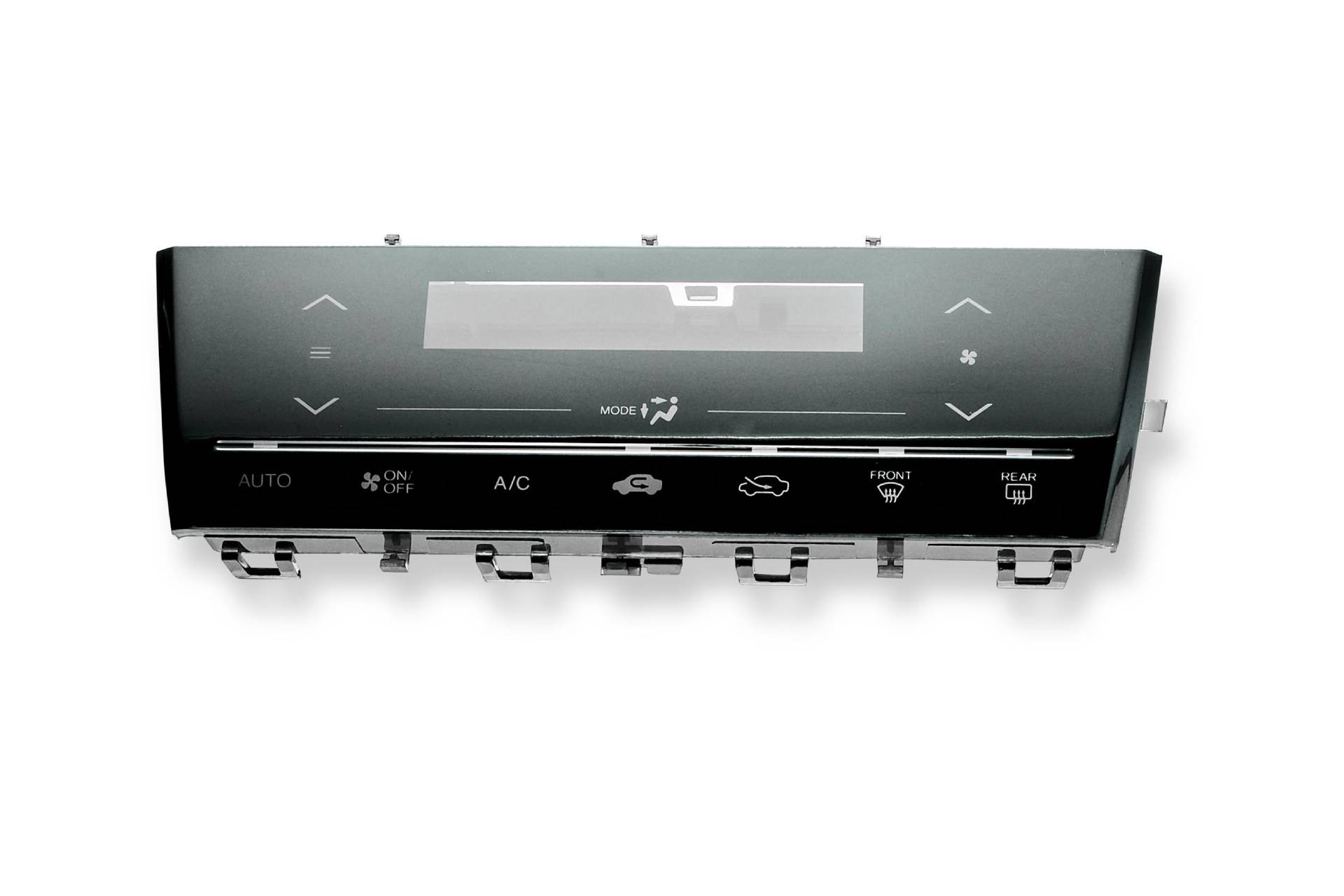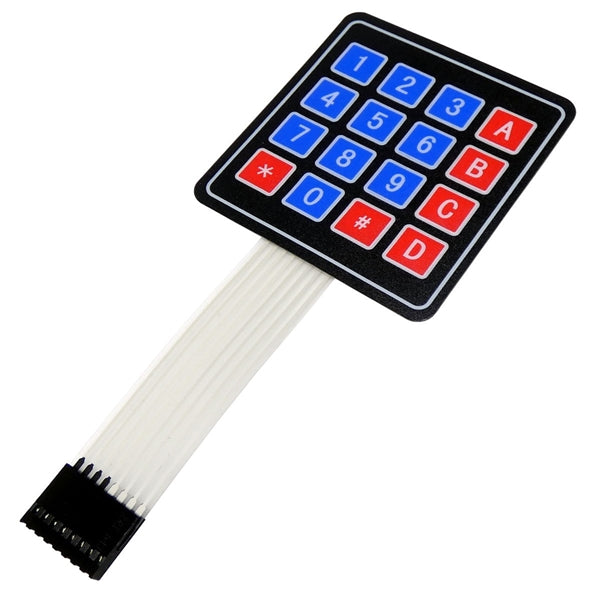You’ll experience the difference when working with a top-tier membrane switch manufacturer.
You’ll experience the difference when working with a top-tier membrane switch manufacturer.
Blog Article
Everything About Membrane Change: Recognizing Its Layout and Functionality
When you think of the control interfaces in modern-day devices, membrane layer switches often enter your mind. These components are greater than simply buttons; they mix design and performance seamlessly. Comprehending exactly how they work and what makes them reliable can alter your perspective on everyday electronic devices. But, there are subtleties to their design and performance that you could not understand. Allow's explore what sets membrane changes apart from various other control systems.
What Are Membrane Buttons?

Membrane layer switches can additionally be tailored concerning form, size, and graphics, allowing manufacturers to produce one-of-a-kind user interfaces tailored to details items. In general, membrane buttons play a considerable role in improving customer experience throughout a large variety of applications.
How Membrane Switches Over Work
When you press a secret on a membrane button, it triggers a straightforward yet effective system. membrane switch manufacturer. The leading layer, commonly made of versatile material, presses down onto a conductive layer below it.
You'll discover that the tactile responses differs based upon the button style, offering either a soft click or a more pronounced response. When you release the key, the membrane layer go back to its original position, reopening the circuit and stopping the signal. This process happens almost instantaneously, making certain a responsive customer experience.
Membrane layer switches are preferred because of their longevity and resistance to dirt and wetness, making them suitable for various applications, from house devices to clinical devices. Recognizing this operation assists you appreciate their extensive usage.
Trick Elements of Membrane Layer Switches
Recognizing the vital elements of membrane layer buttons is basic for understanding their functionality and style. The safety layer shields versus environmental variables and wear, prolonging the switch's life-span. By understanding these elements, you'll obtain insight right into exactly how membrane layer switches operate and their significance in numerous applications.
Materials Made Use Of in Membrane Switch Layout
The efficiency and durability of membrane layer changes greatly rely on the materials used in their design. You normally run into polyester and polycarbonate as key substrates due to their exceptional toughness and versatility. These materials withstand scratches and chemicals, making them excellent for demanding settings.
The conductive layers often use silver or carbon, chosen for their dependability and conductivity. membrane switch manufacturer. Silver provides exceptional efficiency, while carbon is a cost-effective alternative. For the overlay, you may think about a matte or shiny surface, relying on your aesthetic requirements and customer experience
Adhesives play a crucial duty also; they bond layers securely and assure durability. Make sure to pick adhesives that hold up against ecological elements like temperature and humidity. Lastly, don't forget the value of a good printing technique for graphics, as it boosts both capability and aesthetic appeal. Picking the best materials will assure your membrane layer button stands the test of time.
Layout Considerations for Membrane Layer Switches
While designing membrane layer buttons, it's crucial to take into account different factors that influence their capability and customer experience. Beginning by focusing on the layout and button dimension; make specific they're user-friendly and easy to navigate.
Do not forget the visuals design; clear labeling and color comparison are significant for exposure. Confirm your style fits environmental elements, like dampness or temperature variants, which could affect efficiency. Remember the importance of screening prototypes with genuine users to collect comments and make necessary changes. This repetitive procedure aids you fine-tune the layout, confirming it fulfills both useful and visual needs efficiently. By thoroughly considering these components, you'll develop a membrane layer switch that enhances usability and contentment.
Applications of Membrane Buttons
Membrane buttons are versatile components discovered in different applications, from industrial devices to customer electronics. You'll see their influence in equipments that need long lasting interfaces and in devices that profit from sleek layouts. Recognizing these applications helps you value the capability and functionality of membrane layer switches in day-to-day technology.
Industrial Devices Usage
When you're looking to enhance the functionality of commercial tools, membrane switches supply a dependable remedy that integrates longevity with straightforward design. These buttons are best for severe settings, offering resistance to dust, wetness, and chemicals. Accept membrane layer buttons to improve your operations and enhance overall performance.
Customer Electronics Integration
In the domain name of customer electronic devices, membrane switches play an important duty in enhancing user communication and gadget functionality. Membrane layer switches also assure sturdiness and resistance to dust and dampness, extending the lifespan of your electronics. By selecting membrane switches, you improve not just the capability but likewise the style of your devices, making day-to-day communications smooth and enjoyable.
Benefits and Negative Aspects of Membrane Switches
While membrane layer switches offer a range of advantages, they also come with some downsides that you must think about. One considerable benefit is their portable design, making them perfect navigate to this website for space-constrained applications.

Membrane layer switches can have a much shorter life expectancy compared to mechanical switches, especially under hefty use. They can likewise be less responsive, which might impact customer responses throughout operation. Stabilizing these pros and cons will assist you determine if membrane layer buttons Click Here are the right fit for your task.
Frequently Asked Inquiries
How Long Do Membrane Switches Typically Last?
Membrane switches over commonly last in between 5 to ten years, depending on use and environmental conditions. You'll wish to evaluate variables like wear, direct exposure to wetness, and temperature level changes to evaluate their durability effectively.
Can Membrane Layer Switches Be Custom-made for Particular Designs?
Yes, you can tailor membrane layer switches to fit specific layouts (membrane switch manufacturer). You'll have the freedom to select shades, forms, and designs that match your job's demands, ensuring they blend flawlessly with your general visual
What Is the Price Array for Membrane Layer Switch Over Manufacturing?
The price array for membrane layer button manufacturing commonly drops between $1 and $10 each, depending on elements like design intricacy, quantity, and materials. You can get quotes from suppliers to discover the finest option.

Are Membrane Layer Switches Waterproof or Immune?
Membrane layer buttons can be developed to be water-proof or resistant, depending on materials used and building techniques. If you need them for damp settings, assure you specify those needs during the layout process.
Just How Do Membrane Changes Contrast to Standard Buttons?
Membrane switches are typically thinner and much more adaptable than typical switches, supplying a sleek design. They're often simpler to cleanse and incorporate, yet might not supply the responsive responses you're utilized to with mechanical options.
Conclusion

Report this page